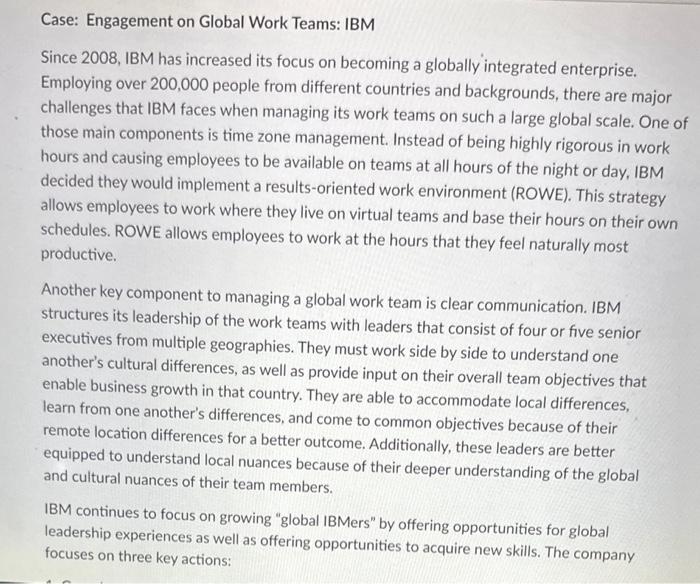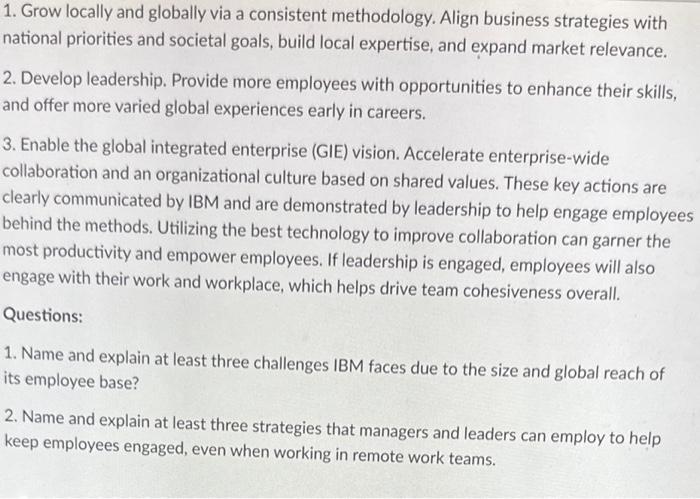Answer questions 1 & 2

Lase: Engagement on Global Work Teams: IBM Since 2008 , IBM has increased its focus on becoming a globally integrated enterprise. Employing over 200,000 people from different countries and backgrounds, there are major challenges that IBM faces when managing its work teams on such a large global scale. One of those main components is time zone management. Instead of being highly rigorous in work hours and causing employees to be available on teams at all hours of the night or day, IBM decided they would implement a results-oriented work environment (ROWE). This strategy allows employees to work where they live on virtual teams and base their hours on their own schedules. ROWE allows employees to work at the hours that they feel naturally most productive. Another key component to managing a global work team is clear communication. IBM structures its leadership of the work teams with leaders that consist of four or five senior executives from multiple geographies. They must work side by side to understand one another's cultural differences, as well as provide input on their overall team objectives that enable business growth in that country. They are able to accommodate local differences, learn from one another's differences, and come to common objectives because of their remote location differences for a better outcome. Additionally, these leaders are better equipped to understand local nuances because of their deeper understanding of the global and cultural nuances of their team members. IBM continues to focus on growing "global IBMers" by offering opportunities for global leadership experiences as well as offering opportunities to acquire new skills. The company focuses on three key actions: 1. Grow locally and globally via a consistent methodology. Align business strategies with national priorities and societal goals, build local expertise, and expand market relevance. 2. Develop leadership. Provide more employees with opportunities to enhance their skills, and offer more varied global experiences early in careers. 3. Enable the global integrated enterprise (GIE) vision. Accelerate enterprise-wide collaboration and an organizational culture based on shared values. These key actions are clearly communicated by IBM and are demonstrated by leadership to help engage employees behind the methods. Utilizing the best technology to improve collaboration can garner the most productivity and empower employees. If leadership is engaged, employees will also engage with their work and workplace, which helps drive team cohesiveness overall. Questions: 1. Name and explain at least three challenges IBM faces due to the size and global reach of its employee base? 2. Name and explain at least three strategies that managers and leaders can employ to help keep employees engaged, even when working in remote work teams









